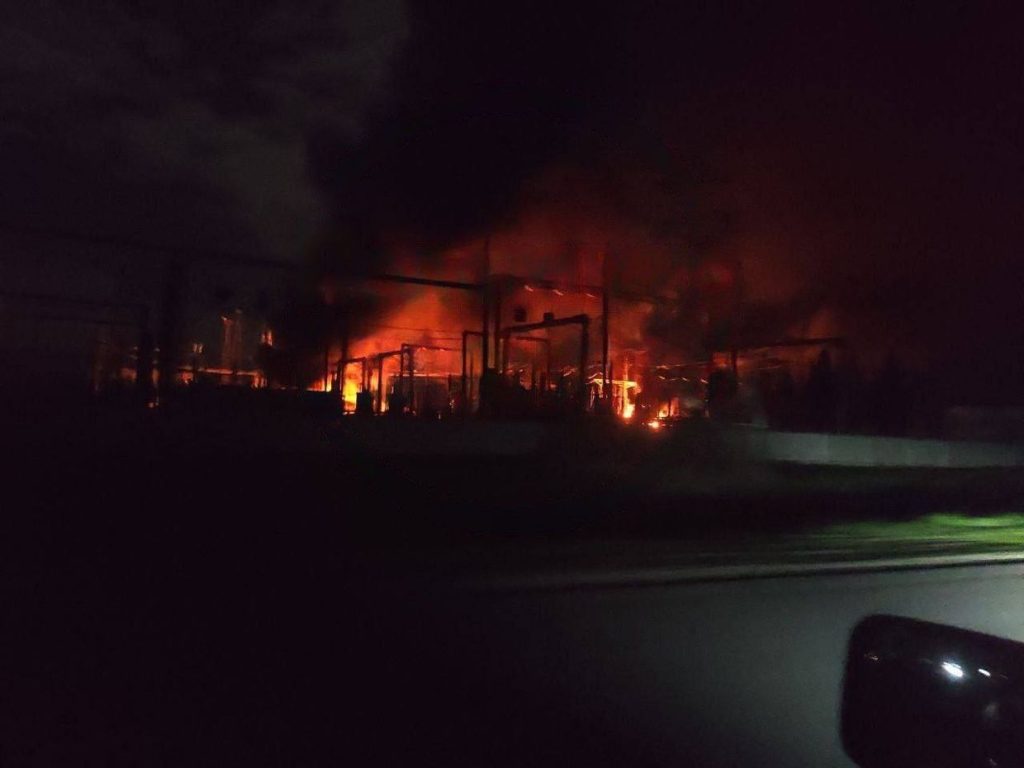Russian energy infrastructure in a large-scale drone attack orchestrated by Ukrainian special services and the military, according to an intelligence source. The attack targeted Russian military-industrial complex infrastructure, causing problems with electricity and water supply in some areas. Russian air defense shot down 50 Ukrainian drones over eight regions, leading to fires at three energy facilities in the latter three regions. The attack was a joint operation involving the Security Service of Ukraine (SBU), Military Intelligence Agency (HUR), and Special Operations Forces (SOF). The Ukrainian drones successfully targeted key infrastructure supporting Russian military facilities. The Kyiv Independent was unable to verify Russian authorities’ claims, and Ukraine typically does not comment on alleged attacks on Russian soil.
Recent weeks have seen Ukrainian forces launching drone strikes aimed at damaging Russia’s oil industry. Reports indicate that 12 Russian oil refineries were successfully targeted in various regions deep inside Russian territory as of March 17. Furthermore, on April 2, Ukraine attacked one of Russia’s largest oil refineries in the city of Nizhnekamsk in Tatarstan, over 1,000 kilometers from Ukraine’s border. The strikes have drawn criticism from U.S. officials who fear that the targeting of oil refineries could destabilize the global energy market. In response, President Volodymyr Zelensky defended Ukraine’s right to use its own weapons for retaliatory strikes on Russian oil refineries, despite concerns from the United States.
As Ukraine faces the challenge of confronting a resurgent Moscow and buying time to rotate troops, resupply, and fortify, a significant part of the strategy is being played out with drone strikes over Russia. In the past two weeks, Ukrainian drones have reportedly carried out numerous strikes against Russian targets. These strikes aim to disrupt Russian activities and infrastructure, particularly in the energy sector. The use of drones allows Ukraine to inflict damage on Russian assets while avoiding direct engagement, showcasing a strategic shift in the conflict between the two nations. This tactic demonstrates Ukraine’s ability to retaliate against Russia’s aggression in a way that disrupts vital industries without escalating the conflict to a full-scale war.
The drone attacks on Russian energy infrastructure highlight the evolving dynamics of modern warfare, where non-traditional tactics play an increasingly significant role. By utilizing drones to target key assets deep inside Russian territory, Ukraine demonstrates its ability to wage effective asymmetric warfare against a larger and more powerful adversary. While traditional military capabilities remain important, the use of drones provides a new dimension to Ukraine’s defense strategy, enabling precision strikes with reduced risk to Ukrainian forces. The ability to strike at Russia’s energy infrastructure not only disrupts its operations but also sends a clear message about Ukraine’s determination to defend itself against external aggression.
The international response to Ukraine’s drone attacks on Russian energy infrastructure has been mixed, with the United States expressing concerns about the potential impact on the global energy market. While the U.S. has criticized Ukraine for targeting oil refineries, Ukrainian officials have defended their actions as necessary for self-defense. President Zelensky’s assertion of Ukraine’s right to retaliate against Russian targets underscores the complexity of the conflict and the strategic decisions being made to deter further aggression. As Ukraine continues to employ drone strikes as part of its defense tactics, the broader implications of these actions on regional stability and international relations will require careful consideration by all involved parties. Ultimately, the evolving nature of warfare in the 21st century underscores the importance of innovative and adaptive strategies in addressing complex geopolitical challenges.


